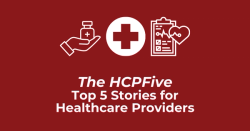
OR WAIT null SECS
EEG Biomarker Helps Identify Placebo Responders in MDD Trials
Alto Neuroscience developed an EEG biomarker that predicts placebo response in MDD trials, potentially improving drug effect detection and reducing trial variability.
On April 28, 2025, Alto Neuroscience presented new data at the Society of Biological Psychiatry (SOBP) 2025 in Toronto showing that an EEG biomarker may help identify placebo responders in major depressive disorder (MDD) trials, a breakthrough that could improve the detection of a drug’s true therapeutic effect.
Clinical trials on MDD have high placebo rates, often ranging between 35% to 45%.
A 2019 analysis of 122 MDD trials found that active and placebo responses are highly correlated. Contrary to common belief, placebo responses have not continued to rise since 1998 and are unlikely to explain declining treatment effects in recent trials. These findings suggest efforts to reduce placebo response may inadvertently reduce overall treatment response.
Alto Neuroscience, led by Chao Wang, PhD, sought to develop and validate an EEG-based biomarker for predicting placebo response as none existed. A biomarker could help reduce trial variability and improve the detection of true drug effects.
“To address the longstanding challenge of high placebo response in neuropsychiatric clinical development, we have successfully identified and prospectively replicated an EEG biomarker that captures placebo response patterns in patients with major depressive disorder,” said Amit Etkin, MD, PhD, founder and chief executive officer of Alto Neuroscience, in a statement. “We believe this biomarker has the potential to reduce noise and improve the detection of true therapeutic effect.”
Investigators hypothesized that a shared predictor across several treatments would approximate a placebo effect. In their analysis, they examined pooled data from open-label MDD trials (n = 589) evaluating FDA-approved antidepressants (n = 260), repetitive transcranial magnetic stimulation (rTMS; n = 252), and agomelatine (n = 77).
The predictive model was developed with baseline resting-state features, normalized EEG features by age and sex, and predicted treatment responses defined by percentage changes in the Hamilton Depression Rating Scale (HAMD-17) scores. The model was then validated by 2 independent datasets (n = 317): an open-label trial of antidepressant ALTO-100 (n = 135) and da ouble-blind randomized controlled trial (EMBARC) evaluating sertraline (n = 83) and placebo (n = 99).
The team identified a biomarker predicting treatment response in the ALTO-100 trial and a placebo response in EMBARC. The study found no consistent correlation between the biomarker and demographic or clinical variables.
The study found Alto Neuroscience’s developed and validated EEG-based biomarker could predict treatment response across various interventions and datasets. The biomarker’s ability to predict placebo response demonstrates the general treatment responsiveness.
The findings suggest that this biomarker may be useful for identifying high placebo responders in MDD clinical trials.
The analysis also showed how ALTO-300 interacts with a machine-learning-derived EEG biomarker that helps identify likely treatment responders. Increasing 5-HT2C activity or depleting dopamine led to greater EEG irregularity. Additionally, ALTO-101 increased theta activity in a preclinical model, showing its potential as a translational biomarker for cognitive impairment in schizophrenia.
Investigators also conducted a prospective analysis that replicated the EEG-based biomarker. In the ALTO-100 placebo arm, the biomarker significantly predicted MADRS change scores, with partial correlations of 0.29 (P = .001), 0.24 (P = .006), and 0.19 (P = .029) at weeks 2, 4, and 6, respectively.
This analysis found that treatment effect sizes in 2 randomized controlled trials were improved when considering individual differences in predicted placebo response. For instance, using biomarker predictions increased the effect size from 0.19 to 0.26 at the primary endpoint at week 8.
“We look forward to leveraging these findings to drive meaningful innovation in psychiatry and enhance clinical outcomes for patients,” Etkin said.
References
Alto Neuroscience Presents New Data at the Society of Biological Psychiatry Annual Meeting Underscoring Precision Psychiatry Approach. Alto Neurosciences. April 28, 2025. https://investors.altoneuroscience.com/news/news-details/2025/Alto-Neuroscience-Presents-New-Data-at-the-Society-of-Biological-Psychiatry-Annual-Meeting-Underscoring-Precision-Psychiatry-Approach/default.aspx. Accessed April 29, 2025.
Wang C, Ravindran S, et at Rose M. An EEG Biomarker for Predicting Placebo Response in Major Depressive Disorder: Development and Validation Across Open-Label and Double-Blind Trials. Presented at SOBP 2025 in Toronto.
Ravindran, S, Wang C, Jordan J. Prospective Replication and Application of an EEG-based Placebo Response Prediction Biomarker in Randomized Controlled Trials in Depression. Presented at SOBP 2025 in Toronto.


